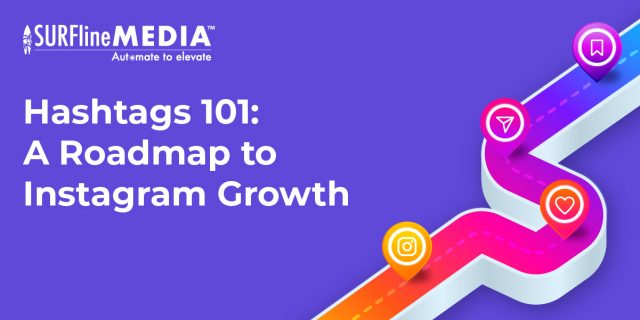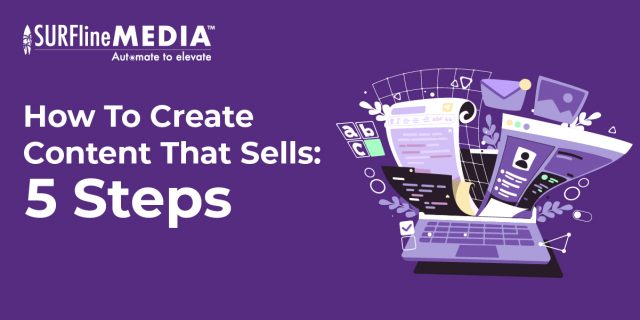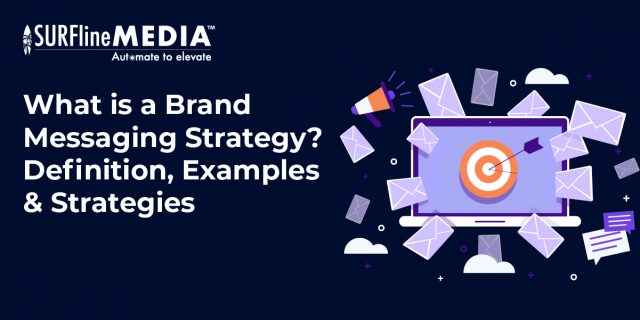
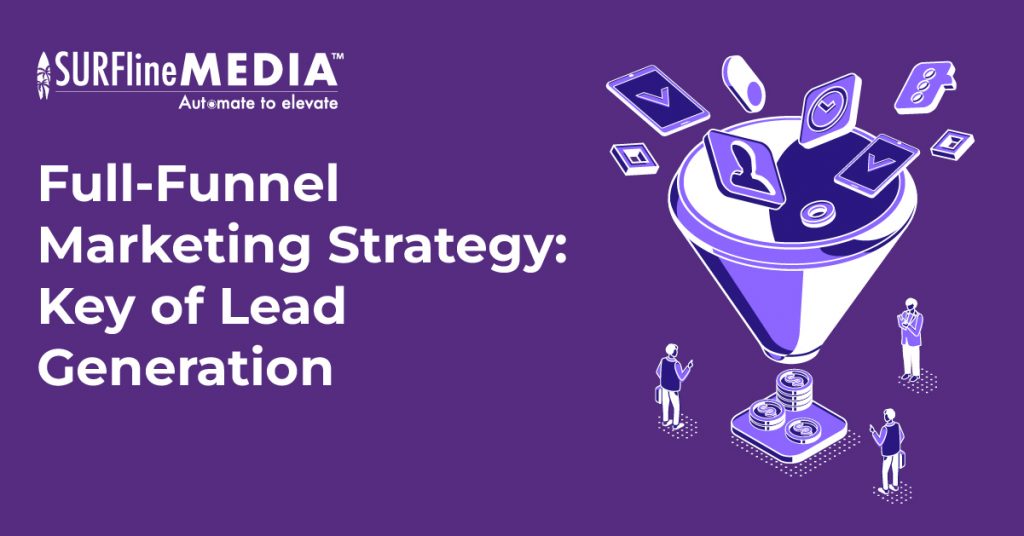
- Janelle Tran
- May 23, 2023
- 4:30 pm
- No Comments
Full-Funnel Marketing Strategy: Key of Lead Generation
Table of Contents
Did you know that 68% of businesses consider implementing a Full-Funnel marketing strategy as their top priority? It’s not surprising, considering the remarkable impact it can have on lead generation and overall business success. In this blog, let’s discover what full-funnel marketing strategy is, why it is important and tactics to achieve it.
What is a full-funnel marketing strategy?
A Full-Funnel Marketing Strategy is a comprehensive approach that encompasses every stage of the customer journey, from initial awareness to post-purchase loyalty.
The marketing funnel represents the path that a prospect takes from the first point of contact with your brand to becoming a loyal customer. It consists of three key stages: the top of the funnel (TOFU), the middle of the funnel (MOFU), and the bottom of the funnel (BOFU).
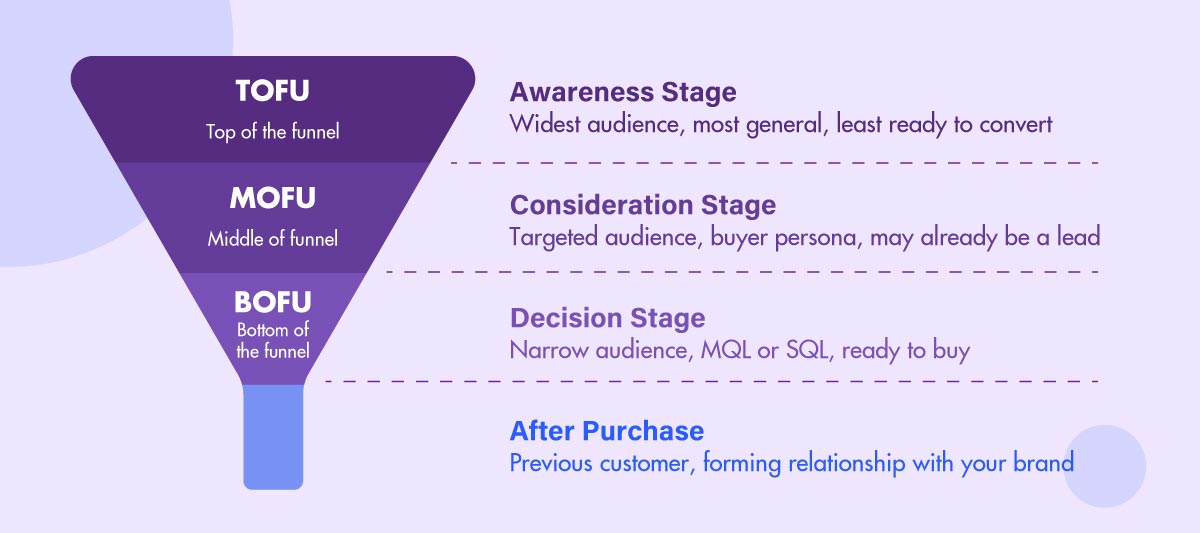
At the top of the funnel, the focus is on creating awareness and generating interest among a broad audience. Middle-funnel activities involve engaging and educating potential customers to build trust and consideration. Finally, the bottom of the funnel aims to convert leads into customers and retain their loyalty.
Why is a full-funnel marketing strategy important?
A Full-Funnel Marketing Strategy is not just a nice-to-have; it’s a crucial approach for businesses aiming to excel in lead generation and achieve remarkable results. Companies like HubSpot, Salesforce, and Amazon have integrated full-funnel approaches into their marketing efforts to drive lead generation, customer engagement, and revenue growth.
1. Allow Automation and Efficiency
A full-funnel marketing strategy enables automation and efficiency by integrating all stages of the customer journey into a seamless and streamlined process. By leveraging automation tools and technologies, businesses can automate repetitive tasks, target specific customer segments with personalized messages. And most importantly, businesses can optimize their marketing efforts for maximum revenue.
This approach allows marketers to save time and resources, focus on strategic initiatives, and deliver a consistent and tailored experience to their target audience. You can learn more about the importance of marketing automation here.
2. Avoiding Missed Opportunities
Without a Full-Funnel Marketing Strategy, businesses may miss out on valuable opportunities to engage and convert prospects at various stages of the customer journey. According to research, 79% of marketing leads never convert into sales.
Businesses can strategically nurture leads and increase the likelihood of conversion, minimizing missed opportunities and maximizing revenue potential.
3. Boosting Conversion Rates
A well-executed Full-Funnel Marketing Strategy can significantly impact conversion rates. Studies show that companies using a full-funnel approach experience a 72% higher conversion rate compared to those who do not. By guiding prospects through the entire customer journey and providing relevant and targeted messaging, businesses can enhance the chances of converting leads into customers.
4. Improving Customer Retention
Full-Funnel Marketing extends beyond the acquisition phase and focuses on customer retention. Research indicates that improving customer retention rates by just 5% can increase profits by 25% to 95%. By implementing strategies to engage and delight existing customers, businesses can foster loyalty, drive repeat purchases, and ultimately, boost their bottom line.
How to build a winning full-funnel marketing strategy?
Building a winning Full-Funnel Marketing Strategy involves a systematic approach that covers all stages of the customer journey.
1. Define Your Funnel
Defining your funnel is the fundamental initial step in building a comprehensive full-funnel marketing strategy. Typically, a funnel consists of three stages: the top of the funnel (TOFU), the middle of the funnel (MOFU), and the bottom of the funnel (BOFU). Each stage represents a distinct phase of the customer’s journey, from initial awareness to final conversion.
However, it’s important to note that depending on your specific business circumstances and target audience, you may choose to divide your funnel into 4 or 5 stages to capture more nuanced interactions and behaviors.
By carefully defining your funnel, you gain a deeper understanding of your customer’s progression, enabling you to tailor your marketing efforts and deliver the right content at the right time.
2. Attract and Engage
This stage is usually at the top of the funnel, focusing on capturing the attention and interest of potential customers, drawing them into your funnel. To successfully attract and engage, it’s crucial to provide valuable and relevant content that addresses their needs and pain points. It’s important to leverage keyword research and SEO techniques to optimize your content for search engines, ensuring that your brand is visible to potential customers when they are actively searching for solutions.
Additionally, an Integrated Marketing Communication plan should be executed across different channels, engaging with your audience through social media, emails, forums, partners, and other online newspapers.
To attract and engage effectively, consider providing educational resources, informative blog posts, engaging videos, and interactive experiences that showcase your expertise and value proposition.
3. Educate and Nurture
This stage is usually known as mid-funnel marketing. After having successfully attracted the attention of potential customers, it’s important to provide them with valuable information and resources that will further educate and guide them in their decision-making process.
To effectively educate and nurture your leads, it’s crucial to understand their needs, pain points, and challenges. This will help you create targeted content that addresses their specific concerns and provides solutions. Consider creating in-depth guides, whitepapers, case studies, and webinars that dive deeper into topics relevant to your audience. By offering valuable insights and expertise, you establish your brand as a trusted resource and build credibility.
Additionally, implementing email marketing campaigns and marketing automation can help nurture leads by delivering personalized content based on their interests and actions. By segmenting your audience and tailoring your messaging, you can provide relevant information and offers that resonate with each lead’s specific needs.
4. Convert and Close
Convert and close is normally the bottom of the funnel, or the lower funnel. This is where you focus on turning your educated and nurtured leads into paying customers. At this stage, your leads have shown a strong interest in your products or services, and it’s time to guide them towards making a purchase or taking the desired action.
To effectively convert and close your leads, it’s important to provide clear and compelling calls-to-action (CTAs) that prompt them to take the next step. This could include signing up for a free trial, requesting a consultation, or making a purchase. Your CTAs should be prominently displayed on your website, landing pages, and email campaigns, making it easy for leads to take action.
In addition to CTAs, it’s crucial to provide social proof and testimonials that showcase the positive experiences of your existing customers. This helps build trust and confidence in your brand and encourages leads to move forward with their decision. Offering special promotions, discounts, or incentives can also be effective in pushing leads towards conversion.
5. Retain and Upsell
Once you’ve successfully converted leads into customers, it’s essential to continue nurturing those relationships and maximizing their lifetime value to your business. Retaining customers is all about providing exceptional customer service, maintaining open lines of communication, and delivering on your promises. Upselling is the practice of encouraging customers to upgrade or purchase additional products or services.
Businesses should implement loyalty programs, referral incentives, and exclusive membership benefits can further incentivize customers to stay engaged and make repeat purchases. Also, offering tailored recommendations or exclusive discounts, personalized emails, newsletters, and social media interactions are strategies to keep them making additional purchases.
Besides, utilizing customer relationship management (CRM) tools is beneficial to track customer interactions, preferences, and purchase history. This data will help you personalize your communication and offerings, making customers feel valued and understood. Additionally, leverage customer feedback and reviews to continually improve your products or services and address any concerns promptly.
In conclusion, a Full-Funnel Marketing Strategy is vital for businesses aiming to avoid missed opportunities, boost conversion rates, improve customer retention, realize long-term value, and align with top companies in the industry.
By leveraging the power of full-funnel thinking, businesses can create impactful marketing campaigns that drive lead generation, enhance customer experiences, and ultimately achieve significant business growth. Contact Surfline Media today to learn more about how we can help you to do Full-Funnel Marketing, CRM and Marketing Automation to win this game!

